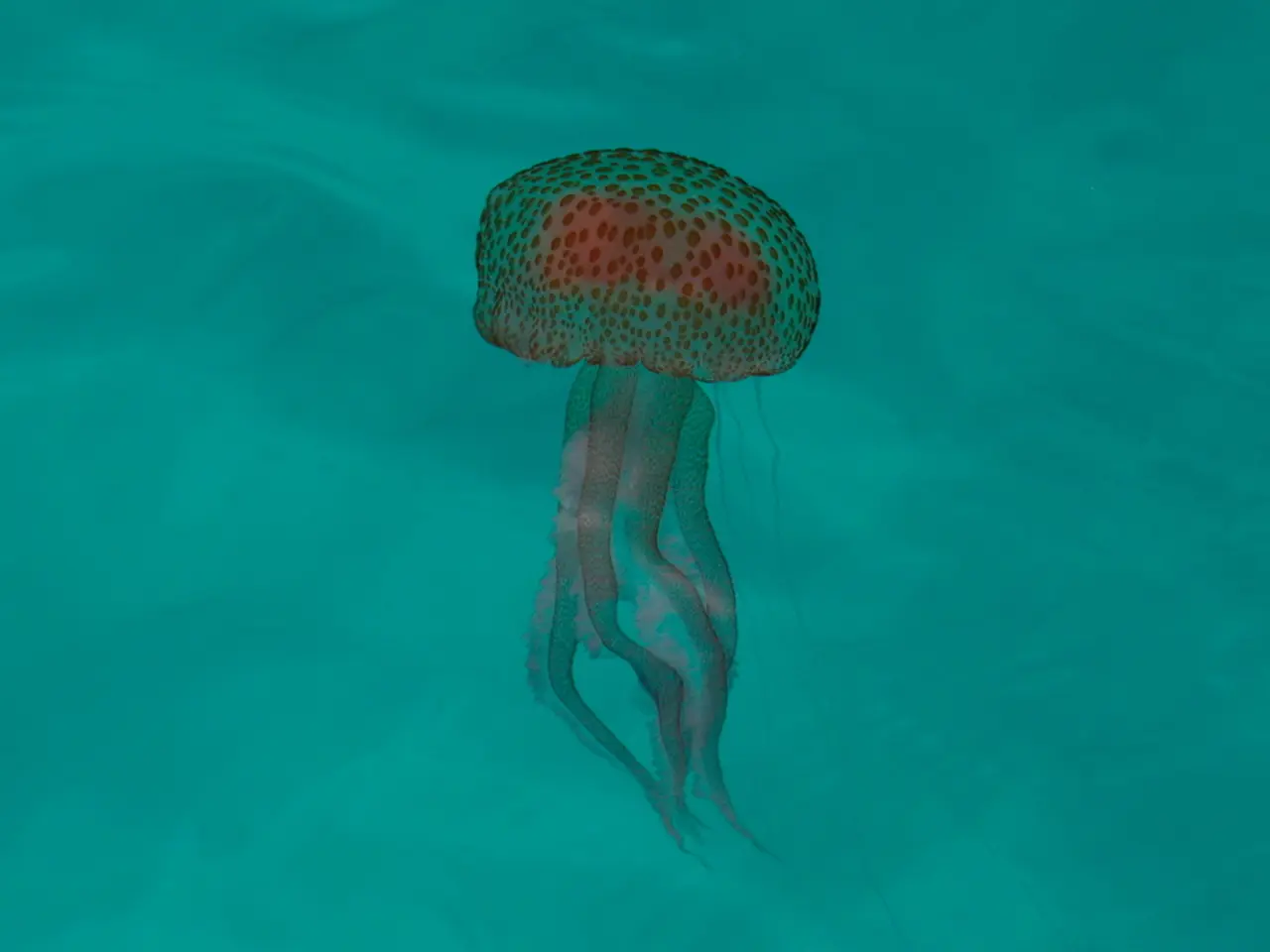Overwhelming jellyfish invasion leads to temporary closure of France's top nuclear power station
Jellyfish Impact Coastal Power Plants, Particularly Nuclear Facilities
Jellyfish are causing disruptions to coastal power plants, particularly nuclear facilities, by clogging their seawater cooling intake pipes and filtration systems. This leads to automatic shutdowns to prevent overheating and potential damage to critical components like turbines, condensers, and boilers.
Such clogging occurs during jellyfish blooms—rapid, massive increases in jellyfish populations—that can block water flow within minutes. This disrupts the cooling process necessary for safe reactor operation, resulting in shutdowns that can last up to days and cause multi-million-dollar losses.
The Gravelines nuclear plant in France, the Torness plant in Scotland, and the Oskarshamn plant in Sweden are among the facilities affected by this phenomenon. The incident at Gravelines occurred late Sunday, causing the plant to remain offline until the jellyfish are cleared and the cooling water systems are restored.
Rising Jellyfish Populations and Climate Change
The problem is increasing due to rising jellyfish populations driven by warming oceans, pollution, and ecological changes near coastal plants. Thermal discharges from plants may also encourage jellyfish blooms, creating a feedback loop.
Climate change, overfishing, and shifting marine ecosystems may be fueling more frequent and intense jellyfish blooms. Fewer natural predators, such as sea turtles, and human-driven changes to the ocean environment could create the perfect conditions for swarms to thrive and drift toward shorelines.
Solutions to Prevent Disruptions
To prevent future disruptions, experts suggest investing in climate-adaptive solutions and alternative technologies such as small modular reactors (SMRs) and hybrid renewable systems that are less reliant on seawater cooling. Improved screening and intake systems, along with ecological monitoring and early warning systems for jellyfish blooms, can help reduce risks. Additionally, implementing advanced filtration and mechanical removal methods with minimal manual intervention may mitigate the need for hazardous manual cleaning during blooms.
The core solution involves a combination of technological upgrades for cooling infrastructure and strategic shifts towards more resilient nuclear plant designs to adapt to climate-driven ecological risks. With warm summer waters still lingering in the North Sea, plant operators and marine scientists will be watching closely for the next unpredictable wave of jellyfish.
- The rapid increase in jellyfish populations, attributed to warming oceans, pollution, and ecological changes, is causing concern within the science and industry communities, particularly for those who operate coastal power plants and nuclear facilities.
- As climate change continues to impact ocean environments, cybersecurity concerns for these power plants may also arise due to the increasing reliance on advanced filtration and mechanical removal technologies.
- To improve the efficiency and resilience of power plants in theface of climate-change driven challenges, investment in innovation or technological advancements such as small modular reactors (SMRs) and hybrid renewable systems is encouraged.
- In the environmental-science field, there is an ongoing debate about the potential financial implications of jellyfish blooms on various industries, including finance and energy sectors.
- Addressing the issue of jellyfish blooms requires collaboration between science, technology, and industry to develop long-term solutions that ensure the safety of coastal power plants and nuclear facilities while minimizing negative impacts on the environment.




